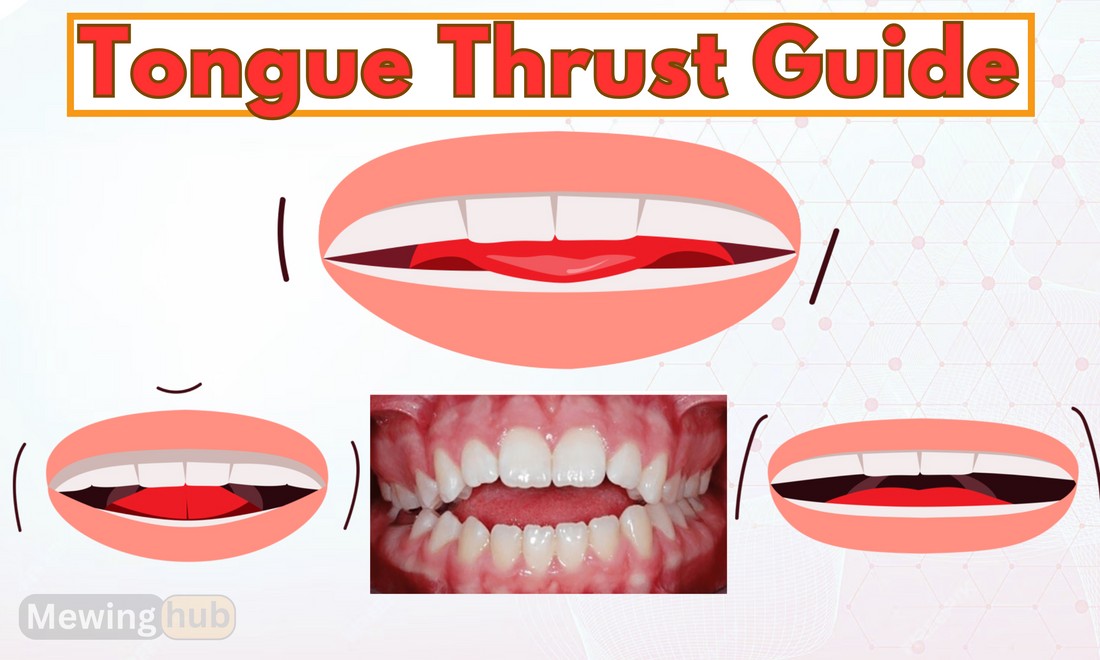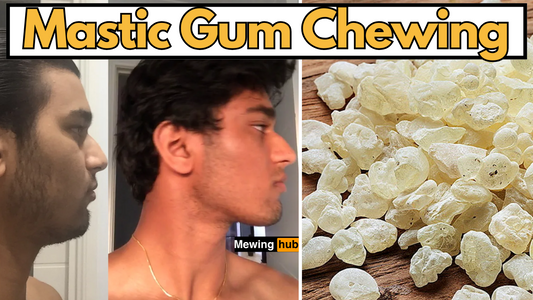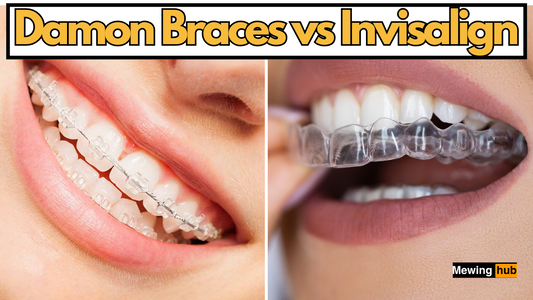What is Tongue Thrusting ? Causes, Symptoms, and Effective Therapies

Share
Tongue thrusting is the habit of pressing the tongue against the teeth, particularly during swallowing, speaking, or at rest.
It can lead to misaligned teeth, speech issues, and even jaw discomfort over time.
While common in children, tongue thrusting in adults can persist due to underlying causes or untreated childhood habits.
What is Tongue Thrusting?
Tongue thrusting is a condition where the tongue pushes forward against the teeth during rest, speech, or swallowing. This habit disrupts the natural function and positioning of the tongue, potentially causing dental and speech issues over time. Instead of the tongue resting on the roof of the mouth — its ideal position — it exerts pressure against the front teeth or even protrudes beyond them.

In normal swallowing, the tongue moves upward against the palate, helping to guide food or liquid down the throat. However, with tongue thrusting, the tongue presses against or between the teeth, leading to improper oral mechanics. Over time, this can create or worsen problems like misaligned teeth, speech impediments (such as a lisp), and even changes in facial structure if left untreated.
Tongue thrusting is not limited to children. While it is common during early development, many adults also experience it due to untreated habits or underlying causes like tongue-tie, nasal congestion, or incorrect oral posture. Recognizing and addressing tongue thrusting early is essential to prevent further complications and improve oral health.
This understanding sets the foundation for exploring its causes, symptoms, and treatment methods, including tongue exercises, therapy, and complementary practices like mewing.
What Causes Tongue Thrust?

Understanding the causes of tongue thrust is key to fixing it. This condition can arise from several factors, including:
- Thumb Sucking or Pacifier Use in Childhood: Prolonged habits during early years can disrupt tongue posture and lead to tongue thrusting in adulthood.
- Chronic Nasal Congestion: Mouth breathing due to nasal blockage forces the tongue into an unnatural position, pressing against the teeth.
- Tongue-Tie (Ankyloglossia): A restrictive lingual frenulum can interfere with tongue mobility, leading to improper posture.
- Poor Swallowing Mechanics: Tongue thrust swallowing occurs when the tongue presses forward against the teeth instead of moving upward during swallowing.
- Stress or Anxiety: Some people develop habits like pushing their tongue against teeth during periods of tension.
Symptoms of Tongue Thrust
Signs of tongue thrust vary from person to person but commonly include:
- Pushing the tongue against the teeth, especially the front teeth.
- Open bite or misaligned teeth caused by constant pressure.
- Speech impediments, such as a lisp.
- Protrusion of the upper teeth.
- Discomfort in the jaw or face due to improper tongue posture.
- The tongue pressing against teeth during swallowing.
What is Tongue Thrusting in Adults?
For adults, tongue thrusting often results from untreated childhood habits or other health conditions. Unlike children, adults may notice its impact more significantly through dental misalignment or difficulty fixing long-standing swallowing patterns.
If untreated, it can worsen orthodontic issues and lead to speech or functional impairments.
Can You Push Your Teeth Out with Your Tongue?
Yes, tongue thrusting can exert enough force to move teeth over time. The constant pressure of the tongue pressing against teeth can lead to alignment issues like an open bite or spacing. This is why it's critical to address tongue thrusting promptly to avoid long-term dental complications.
How to Stop Tongue Thrusting

Stopping tongue thrusting requires a multi-faceted approach that combines awareness, exercises, and professional guidance. Here are the most effective solutions:
1. Tongue Thrust Exercises
Consistent practice of tongue thrust exercises can retrain your tongue to rest and function in the correct position. Try these:
- Tongue Tip Placement Exercise: Place your tongue tip behind the upper front teeth on the alveolar ridge and hold it there while swallowing.
- Suction Hold: Press your tongue against the roof of your mouth and hold it in place without pressing against the teeth.
- Tongue Push-Backs: While keeping your lips closed, push your tongue against the roof of your mouth, then release.
2. Tongue Thrust Therapy for Adults
Tongue thrust therapy is a structured approach often guided by a speech-language pathologist or orthodontist. This therapy focuses on correcting tongue posture, improving swallowing techniques, and eliminating harmful habits like tongue thrust swallowing.
3. Awareness and Behavioral Adjustments
Being mindful of when your tongue presses against your teeth is crucial. If you catch yourself pressing your tongue against teeth while working, swallowing, or speaking, consciously reposition your tongue on the roof of your mouth.
4. Orthodontic Intervention
If tongue thrusting has caused significant dental issues, orthodontic treatment such as braces or aligners may be necessary to correct teeth alignment.
5. Mewing: The Natural Tongue Training Technique
Mewing is an increasingly popular practice that involves placing the tongue in its correct resting position to improve facial structure and oral health.
For those with tongue thrusting habits, mewing can help by:
- Encouraging proper tongue posture on the roof of the mouth.
- Strengthening tongue muscles to prevent pressing teeth with the tongue.
- Reducing open bite and improving dental alignment over time.
Practicing mewing consistently can complement other therapies and exercises for stopping tongue thrusting effectively.
Tongue Thrust Swallowing: What It Is and How to Fix It

Tongue thrust swallowing occurs when the tongue pushes against the teeth during the swallowing process.
This incorrect swallowing pattern can reinforce tongue thrusting habits. To fix it:
- Practice correct swallowing techniques, such as pressing the tongue tip against the roof of your mouth while swallowing.
- Use tools like tongue trainers to guide the correct motion.
- Consider working with a specialist to eliminate ingrained habits.
How to Fix Tongue Thrust in Adults
Fixing tongue thrust in adults requires commitment and the right strategies.
A combination of tongue thrust therapy, targeted exercises, and techniques like mewing can help reprogram muscle memory.
Incorporate these habits into your daily life and stay consistent to see long-term improvements.
The Role of Mewing in Fixing Tongue Thrusting

Mewing is not just a trend; it’s a scientifically supported method for improving oral posture and facial aesthetics. By training your tongue to rest properly on the palate, mewing can:
- Prevent tongue thrusting by promoting upward tongue pressure.
- Align the jaw and teeth over time.
- Complement orthodontic treatment by improving muscle function around the mouth and face.
However, mewing requires patience and daily practice. When combined with therapy, it can be a game-changer for tongue thrusting issues.
How to Stop Pushing Tongue Against Teeth

Here are practical steps to eliminate the habit of pushing your tongue against teeth:
- Reposition Your Tongue: Place it on the roof of your mouth with the tip just behind the upper front teeth.
- Practice Daily Exercises: Regularly perform tongue thrusting exercises for adults to strengthen your muscles.
- Eliminate Mouth Breathing: Address any nasal blockages or allergies causing you to breathe through your mouth.
- Seek Professional Help: Work with a speech therapist or orthodontist if necessary.
Conclusion: Is Tongue Thrusting Treatable?
Tongue thrusting is a manageable condition with the right knowledge and techniques. Whether caused by poor habits, structural issues, or other factors, you can fix tongue thrusting through therapy, exercises, and lifestyle changes. Mewing can play a supportive role in retraining your tongue and improving your overall oral health.
By staying consistent with exercises and paying attention to your tongue's posture, you can stop tongue thrusting and enjoy better dental health and aesthetics over time.








